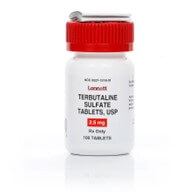A nurse is performing a vaginal examination on a client who is in labor and has a prolapsed umbilical cord.
Which of the following actions should the nurse take to relieve cord compression?
Push the presenting part upward with gloved fingers
Pull the cord gently to reduce tension
Clamp the cord with sterile forceps
Cut the cord and tie it with sterile string
The Correct Answer is A
The correct answer is choice A. Push the presenting part upward with gloved fingers. This action can relieve cord compression and improve fetal oxygenation until an emergency cesarean section can be performed.
Choice B is wrong because pulling the cord gently to reduce tension can cause more damage to the umbilical vessels and increase the risk of fetal hemorrhage.
Choice C is wrong because clamping the cord with sterile forceps can cut off the blood supply to the fetus and cause fetal death.
Choice D is wrong because cutting the cord and tying it with sterile string can also cut off the blood supply to the fetus and cause fetal death.
Some additional information:
• A prolapsed umbilical cord is a rare but life-threatening obstetric emergency that occurs when the umbilical cord is abnormally positioned between the fetal presenting part and the cervix.
• The normal range of umbilical cord length is 40 to 60 cm. A longer cord can increase the risk of prolapse.
• The normal range of fetal heart rate is 110 to 160 beats per minute. A prolapsed cord can cause fetal bradycardia (slow heart rate) due to hypoxia.
Nursing Test Bank
Naxlex Comprehensive Predictor Exams
Related Questions
Correct Answer is ["A","B","C","E"]
Explanation
The correct answer is choices A, B, C and E.These are all risk factors for umbilical cord prolapse, which is a complication that occurs when the umbilical cord drops through the cervix and into the vagina ahead of the baby during delivery.This can cause fetal hypoxia and distress by compressing the cord and reducing blood flow to the baby.
Choice A is correct because polyhydramnios, or excessive amniotic fluid around the fetus, can cause the cord to slip out when the membranes rupture.
Choice B is correct because breech presentation, or abnormal positioning of the baby, can make it easier for the cord to slip between and past the fetal feet and into the pelvis.
Choice C is correct because premature rupture of membranes, or breaking of the water before labor begins, can cause the cord to prolapse if the baby’s head is not well engaged in the pelvis.
Choice D is wrong because post-term pregnancy, or pregnancy that lasts longer than 42 weeks, is not a risk factor for umbilical cord prolapse.However, it can increase the risk of other complications such as fetal macrosomia, placental insufficiency and meconium aspiration.
Choice E is correct because multiple gestation, or having more than one baby in the uterus, can cause unstable lie, or frequent changes in the position of the baby.This can increase the risk of cord prolapse if the membranes rupture when the baby is not in a cephalic (head-down) position.
Correct Answer is B
Explanation
Terbutaline is a medication that can relax the uterine muscles and reduce contractions.This can help relieve pressure on the prolapsed umbilical cord and restore blood flow to the baby while preparing for an emergency cesarean delivery.
Choice A is wrong because magnesium sulfate is used to prevent seizures in women with preeclampsia or eclampsia, not to treat umbilical cord prolapse.
Choice C is wrong because oxytocin is used to induce or augment labor, not to stop it.Oxytocin can increase contractions and worsen cord compression.
Choice D is wrong because methylergonovine is used to prevent or treat postpartum hemorrhage, not to treat umbilical cord prolapse.Methylergonovine can also increase contractions and worsen cord compression.

Whether you are a student looking to ace your exams or a practicing nurse seeking to enhance your expertise , our nursing education contents will empower you with the confidence and competence to make a difference in the lives of patients and become a respected leader in the healthcare field.
Visit Naxlex, invest in your future and unlock endless possibilities with our unparalleled nursing education contents today
Report Wrong Answer on the Current Question
Do you disagree with the answer? If yes, what is your expected answer? Explain.
Kindly be descriptive with the issue you are facing.
